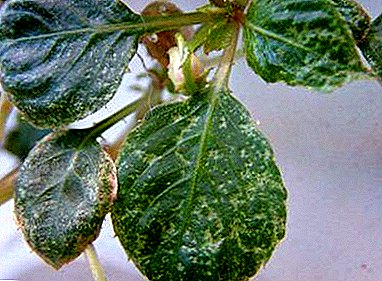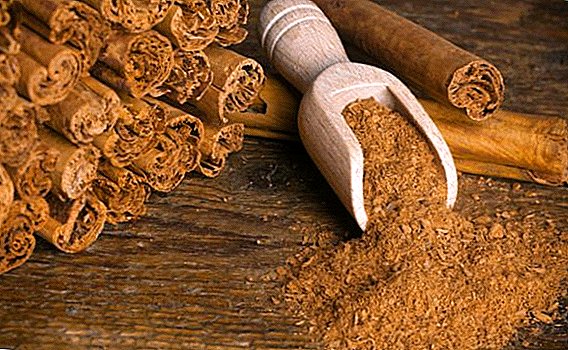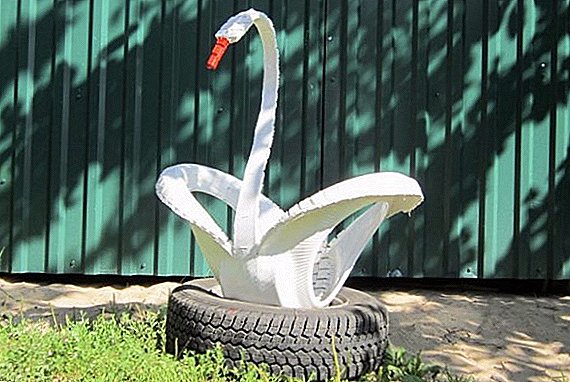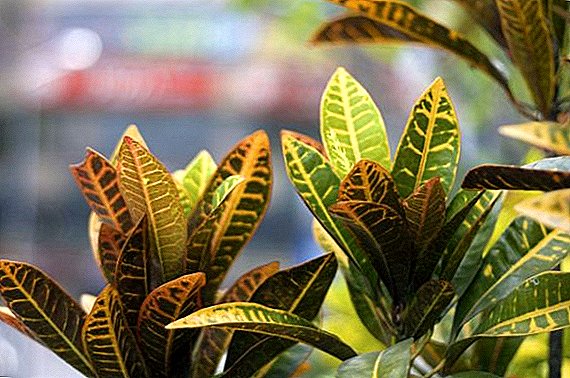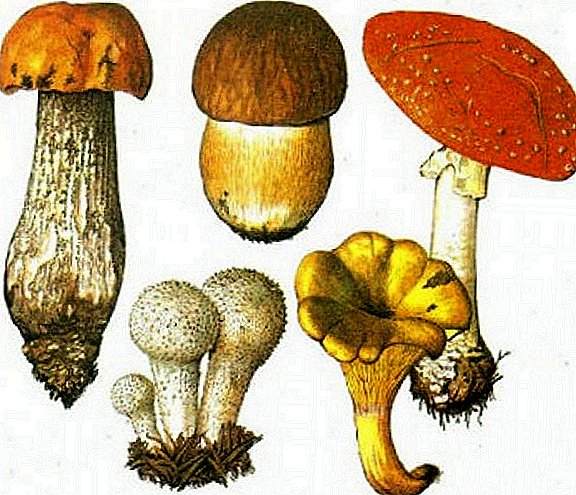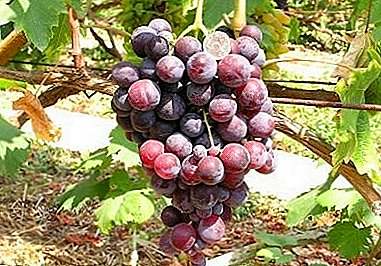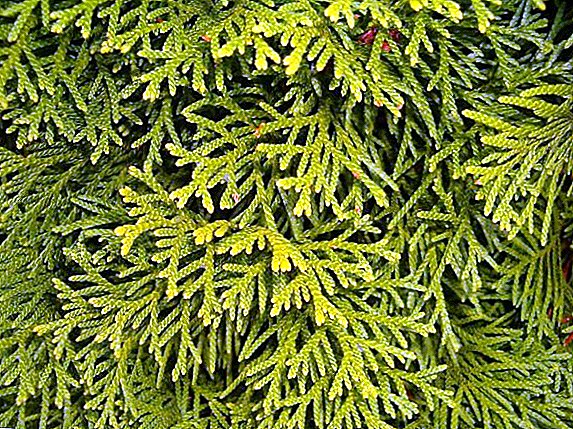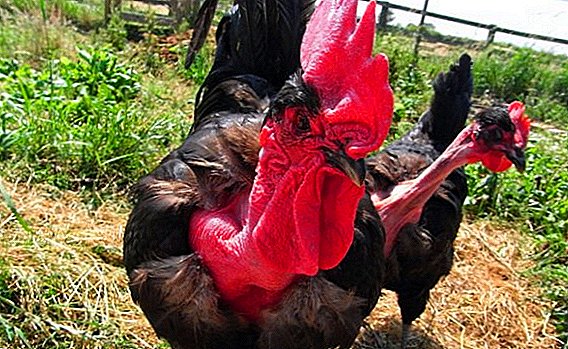 Recently, such birds as indokury have become especially popular.
Recently, such birds as indokury have become especially popular.
Who are they, what they look like, what they eat and what benefits they bring to the farm, we will look at this article.
Description and features
The goloshike is a somewhat specific breed, for the most part it is related to its appearance. The characteristic is complete, with the inclusion of proper poultry care, diet and housing conditions will pleasantly delight those who have long been thinking about acquiring it. 
Origin
Hypothesis about where exactly the breed of necks appeared, mass. Nevertheless, not one of them has been finally approved, and it remains only to guess which country has become home to the Indokur. Since the Indokury came to Ukraine and Russia from Semigradia (another name for Transylvania, the western, northwestern and central regions of present-day Romania), one can find such a breed name as semi-Grad or Transylvanian chickens.
There is an opinion that the gobies came to Romania from Spain, and the place of their appearance is not at all Transylvania, and Andalusia is a Spanish province. Therefore, now more and more often these chickens can be purchased under the name "Spaniard mouth".
Did you know? For the first time, farmers encountered this breed in 1875 at an exhibition in Vienna. Another 55 years later, golosheiki began to gain popularity throughout Europe and partly in the USSR.
It is because of the widespread breed of chickens in Romania that the country has become a contender for the homeland title of golosheek. They are also popular in other European countries - France, Germany, Hungary, Austria. But in the expanses of the United States, Ukraine and Russia, the bird is found many times less. 
External characteristics
Gobwheels are still an infrequent guest in the open spaces of Ukraine and Russia, and therefore it makes sense to get acquainted with the description of this interesting breed.
Hulk - the result of crossing chickens and turkeys, so it is rather difficult to attribute it to one of these species. The name of the breed clearly hints at the main feature of the bird: feather follicles on the goiter, neck, under the wings, and also on the inside of the legs, they are completely undeveloped. These sites are called apterias, and they are completely devoid of feather cover.
We recommend to get acquainted with the breeds of chickens: Hisex, Hubbard, Maran, Amroks, Master Gray.
The skin on the neck in adults is red as usual. Over time, it coarsens, becomes wrinkled. The nape of the bird is decorated with a “feather cap”, and there is a “bow” around the neck.
Feathers to the body of the bird fit loosely, because of what you would think that they are lowered to the ground. The tail of the neck, on the contrary, is raised. Feet strong.
The torso is cylindrical in the neck, while the pectoral muscles are sufficiently developed, and the stomach is slightly rounded. The head is large, the beak is slightly curved, the eyes are orange or red, the comb is small, saturated red. Earrings at birds of the small size.
Did you know? To pluck a neck is easier than a regular chicken, since the feathers of a bird are two times less
The color of feathers in this breed can be found for every taste and color: from Colombian to black. 
Productivity
As early as the beginning of the 20th century, hen-eyed hens were not in demand on the territory of the USSR - because of the strange, unusual appearance of chickens they were considered sick, which means they could not bring any benefit, and there was no point in keeping them.
The situation radically changed when it became known about how productive the golosheyka. This bird is a good hen. For the year, one chicken can carry 160 eggseach weighing 55-60 grams. And she begins to rush, reaching the age of five or six months.
Learn how to equip a comfortable nest and roost for a laying hen.
Rump meat is valued no less - it has a pleasant taste characteristics, it is considered dietary, which means that it is not heavy for the stomach, and it can be eaten both by adults and children. Since the weight of an adult individual reaches an average of 2.5-3 kg and the poultry chest is well developed, the breed can rightly be attributed not only to the bearing type, but also to the meat type.
Rules for buying chickens
When purchasing hens of the Spaniard breed polosheyka need to pay attention to following factors:
- The body - it should not be weak, it can be a sign of illness.
- Eyes - iris deep and dark shades are not welcome.
- Legs - just like the body, should not be frail.
- Apical sites - feathers present on them are not an acceptable standard for the breed. Yellow skin color is also unacceptable.

Conditions of detention
There is an opinion that the more exotic a bird looks, the harder it is to care for it and the more it is demanding to living conditions. Contrary to this myth, the cultivation of peas in the home does not require special costs or knowledge: indokury absolutely unpretentious. Moreover, they are quite hardy, which is why they receive warm comments not only from experienced farmers, but also from novice farmers and owners. Nevertheless, it is still necessary to follow some rules of bird care.
For normal life of chickens, the air temperature should be above 0 °. The lack of feathering on the neck and other appterial areas in no way affects the resistance of the bird to frost. As mentioned above, the neck is a hardy breed that can adapt to cool climatic conditions as well.
Important! Despite the frost resistance of golosheek, it is desirable to maintain the air temperature in the chicken coop about 10-15 ° C with a "plus" sign.
Laying in the chicken coop, it is desirable to choose peat. It kills harmful bacteria and also maintains the required level of moisture.
In countries with a warm climate, birds can be kept right on the street, where it is cooler, it is still necessary to equip a chicken coop - it will not be difficult to survive the summer in not the most usual conditions (the breed is still Spanish, accustomed to heat), but the cold winter will not be the most pleasant surprise, so you should take care of that during this period chickens were in a room with an acceptable temperature for them - from +5 to +15 ° C.  At the very least, it is important to ensure that the temperature in the hen house does not fall below zero. Due to the fact that blood rushes to the bare neck of the bird, it can adapt to this climate, but there will be about twice as much.
At the very least, it is important to ensure that the temperature in the hen house does not fall below zero. Due to the fact that blood rushes to the bare neck of the bird, it can adapt to this climate, but there will be about twice as much.
We advise you to read about the breeds of chickens: Loman Brown, Cochinhin, Sussex, Orpington, Minorca, Dominant, Black Bearded, Russian White, Faverol, Andalusian, Wyandot.
Courtyard for walking
Rides - birds are calm, but far from passive. In order for them to develop evenly, they should be periodically let out for walks around the yard, even in winter. Walking golosehek winter should stop if the temperature dropped below -15 ° C. Despite the resistance and quick adaptation of birds to climatic conditions, cold can harm them.
Sunlight for birds is also necessary, as well as green food, therefore do not place the courtyard in the shade. But the presence of herbaceous plants will only benefit the birds - the green fodder will partially replace the usual, grain, which means that the poultry farmer can reduce the cost of feeding gosher. Dust trays will not be redundant in the summer.
What to feed
The owners, just starting to get acquainted with the golosheykami, can not worry about what to feed this strange bird. In food, it is unpretentious, and feed it can be the same as ordinary chickens: cereals, vegetables, dairy products, clover.  It is worth feeding the hens also with germinated grain. It is good to include in their diet and vegetables. Thus, the bird will receive the necessary nutrients.
It is worth feeding the hens also with germinated grain. It is good to include in their diet and vegetables. Thus, the bird will receive the necessary nutrients.
Did you know? Digestion of golosheek has its own characteristics. Sand is an excellent nutritional supplement for them.
Also in the diet of birds, it is desirable to make corn, yeast, ground egg shells (it contains the necessary calcium) and chalk. The poultry feed is not neglected, but the owner must understand that only a balanced feed will give the chickens all the necessary vitamins and trace elements.
The daily feed allowance for an adult individual weighing 2 kg is 130 g. For each subsequent 250 g of the weight of the shank, there are 10 g of supplement to the feed.
The presence of water in the feeder should be constant.
Read also about the rocks Brahma, Leggorn, Poltava, Kuchinsky Jubilee, Adler silver, Zagorsk salmon, Rhode Island, Redbro.
Rearing
Productivity Indokur quite high, so their breeding is not devoid of meaning. As you already understood, golosheyki far from being as exotic as it may seem at first glance, and care for them is not very different from the care of the usual hens. The same applies to the breeding of young animals. Nevertheless, there are several important points that need attention. 
Maintenance and care
Golosheika managed to establish itself as great parents - they do not offend chickens, in every possible way look after them and show care. But it concerns only hatched chicks. Birds do not have a tendency to patiently incubate their offspring, which is why it is worth getting an incubator so that the chickens are still born.
In the first weeks of life, chicks are very sensitive, so it is important to ensure that they are in a dry and warm (25-30 ° C) room without drafts. At the same time airing should not be avoided. The temperature of the air can be lowered as the shins grow older. By the end of their first month of life, chickens will be able to safely carry the temperature at 18-20 ° C
Feeding
How do goshofes feed on chickens, how to feed them is another question that is asked by the owners, who are not familiar with this breed.  As well as for adult individuals, the nestlings of the peas must have a balanced diet, because it is up to them that they continue their successful development.
As well as for adult individuals, the nestlings of the peas must have a balanced diet, because it is up to them that they continue their successful development.
To feed the chickens is vegetables, crushed grain, ground boiled eggs. Adding wheat bran will be a great addition to the diet of chicks. Also from two months you can add fish oil and corn to chickens food - it prevents poultry obesity.
Feed the chickens need every two hours. Feeders, respectively, to keep clean and not to leave there the uneaten food - this will help maintain the health of small goshosykam.
Having talked about the neck in detail, we can summarize. Despite the unusual appearance, this chicken is not much different from the usual. Does not require special conditions of maintenance, feeding, rearing both adult chickens and chickens. At the same time, she pleasantly surprises with her productivity, as well as calm and livable character.


